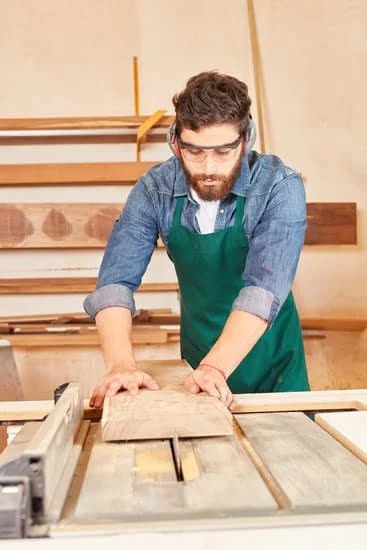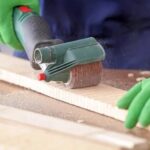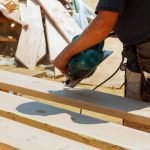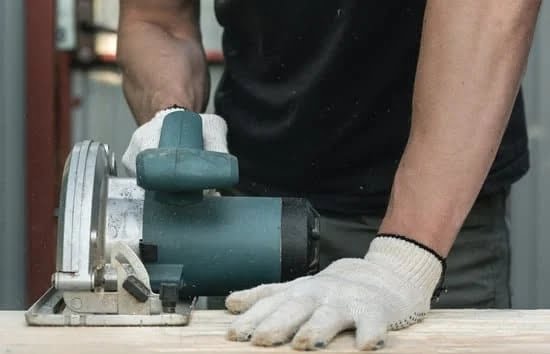Scribing is an essential technique in woodworking that allows for precision and accuracy when fitting wood pieces together. In this article, we will explore the art of scribing in woodworking, its importance, and how to achieve clean and precise results. Understanding the concept of scribing is crucial for any woodworker looking to elevate the quality of their projects.
Precision and accuracy are fundamental aspects of woodworking, and scribing plays a vital role in achieving these qualities. Whether it’s fitting two pieces of wood together seamlessly or creating intricate designs, scribing is a skill that can greatly enhance the overall craftsmanship of a project. By mastering scribing techniques, woodworkers can ensure that every joint, seam, and line meets their exact specifications.
To begin our exploration of scribing in woodworking, we will first delve into the essential tools and materials needed for this technique. Understanding the purpose and usage of each tool is key to successful scribing. Additionally, we will discuss proper preparation methods for wood before scribing, emphasizing the importance of accurate measuring and marking to achieve precise results.
Understanding the Tools and Materials Needed for Scribing
When it comes to scribing in woodworking, having the right tools and materials is essential for achieving precise and accurate results. Understanding the purpose of each tool and material is crucial in ensuring that the scribing process goes smoothly. Here, we will discuss the essential tools and materials needed for scribing in woodworking.
Essential Tools for Scribing
One of the key tools needed for scribing in woodworking is a compass. A compass allows woodworkers to create precise arcs or circles on their workpiece, making it ideal for creating intricate designs or patterns. Another important tool is a scribe or marking gauge, which is used to create straight lines along the wood surface. Additionally, having a sharp pencil or marking knife is crucial for accurately marking measurements and reference points on the wood.
Materials for Scribing
In addition to tools, certain materials are also necessary for successful scribing in woodworking. Woodworkers should have access to high-quality wood suitable for their project, as well as sandpaper for smoothing rough surfaces before scribing. It’s also important to have a reliable measuring tape or ruler to ensure accurate measurements and markings on the wood.
By understanding how these tools and materials are used in scribing, woodworkers can effectively prepare themselves for mastering this technique and achieving quality results in their woodworking projects.
It’s important that woodworkers take time to familiarize themselves with each of these tools and materials listed above before they begin scribing. Understanding how they are used, maintained, and properly handled will greatly contribute to achieving clean and precise scribing lines in woodworking projects.
Steps to Prepare the Wood for Scribing
Scribing in woodworking is a crucial technique that requires careful preparation of the wood to achieve precise and accurate results. Before diving into the actual scribing process, it is essential to properly prepare the wood to ensure that the lines are accurately marked and measurements are exact. This section will discuss the necessary steps to prepare the wood for scribing, emphasizing the importance of measuring and marking for accuracy.
The first step in preparing the wood for scribing is to ensure that the surface is clean and free from any debris or imperfections. Any dirt, dust, or uneven surfaces can affect the accuracy of the scribing lines, so it is important to thoroughly clean and smooth out the wood before proceeding.
Once the wood surface is clean, accurate measurements need to be taken to determine where the scribing lines will be placed. Depending on the specific woodworking project, precise measurements are crucial for achieving accurate scribing results. Using a high-quality measuring tape or ruler, carefully measure and mark where each scribing line will go, ensuring that they are positioned correctly according to the project’s specifications.
Furthermore, it is essential to use the right marking tools such as pencils or marking knives to clearly indicate where each scribing line will be placed. These markings will serve as guides during the actual scribing process and must be clearly visible and accurate.
By following these preparatory steps with precision and attention to detail, woodworkers can set themselves up for success when it comes time to perform the actual scribing technique. Properly preparing the wood ensures that all subsequent scribing work will be accurate and contribute to a successful woodworking project.
| Steps in Preparing Wood for Scribing | Importance |
|---|---|
| Clean surface thoroughly | Ensures accuracy of scribing lines |
| Take precise measurements | Crucial for accurate scribing results |
| Use high-quality marking tools | Clear and visible guides for scribing lines |
Techniques for Scribing in Woodworking
Using a Compass
One of the most common and versatile techniques for scribing in woodworking is using a compass. This tool allows for precise and consistent markings on wood, making it ideal for tasks such as fitting joints, creating arcs, or marking parallel lines.
To use a compass for scribing, simply adjust the width to the desired measurement and then run the point along the edge of the wood while keeping the pencil or knife firmly in place. This method provides accurate scribing lines that are essential for ensuring a proper fit and finish in woodworking projects.
Using a Scribing Tool
Another effective technique for scribing in woodworking is using a dedicated scribing tool. These tools are specifically designed for accurately transferring measurements and are often adjustable to accommodate different thicknesses of materials. By pressing the scribing tool firmly against the surface of the wood while simultaneously running it along the edge, woodworkers can create precisely marked lines that match their intended measurements.
Combining Techniques
For more complex or intricate woodworking projects, combining different scribing techniques can often yield the best results. Woodworkers may choose to start with a compass to establish initial reference points before switching to a scribing tool for more detailed and precise markings. By understanding how each technique complements the other, woodworkers can achieve exceptional accuracy and precision in their scribing work.
These techniques offer valuable insight into how to scribe woodworking effectively, allowing woodworkers to achieve professional-looking results in their projects. By mastering these methods and practicing them regularly, individuals can elevate their woodworking skills as they gain confidence and precision in their scribing abilities.
Common Mistakes to Avoid When Scribing
When it comes to scribing in woodworking, precision and accuracy are of utmost importance. However, even the most experienced woodworkers can make mistakes when scribing. Identifying and avoiding common errors is essential for achieving clean and precise results in your woodworking projects. Here are some common mistakes to avoid when scribing:
- Incorrect Measurement: One of the most common mistakes in scribing is inaccurate measurement. Whether it’s measuring the wood itself or marking the scribe line, any slight error can lead to a significant discrepancy in the final result.
- Using Dull Tools: Working with dull marking or cutting tools can create messy and imprecise scribe lines. It’s crucial to regularly sharpen your tools and replace any worn-out ones to ensure clean and accurate scribing.
- Ignoring Grain Direction: The direction of the wood grain plays a crucial role in scribing. Ignoring the grain direction can result in tear-out or splintering, especially when making deeper cuts. It’s important to pay attention to the grain direction when scribing to achieve clean and smooth results.
To avoid these mistakes, always double-check your measurements before making any marks on the wood. Ensure that your marking and cutting tools are sharp and well-maintained to achieve clean scribe lines. Additionally, be mindful of the wood grain direction when scribing to prevent any tear-out or splintering.
By being aware of these common mistakes and taking proactive steps to avoid them, you can significantly improve the precision and cleanliness of your scribing in woodworking projects. Paying attention to detail and practicing proper technique will eventually lead to cleaner and more accurate results in your woodworking endeavors.
Tips for Achieving Clean and Precise Scribing Results
When it comes to scribing in woodworking, achieving clean and precise results is essential for the overall quality of the project. One of the most important factors in achieving this is using the right tools. A sharp scribing tool or compass will ensure that your lines are accurate and clean. Additionally, maintaining the sharpness of your tools is crucial. Regularly sharpening and honing your scribing tools will make a significant difference in the precision of your lines.
Another important tip for achieving clean and precise scribing results is to pay attention to the direction of the wood grain. Understanding how the grain runs will allow you to make deliberate and accurate cuts, resulting in cleaner scribe lines. It’s also important to use a light touch when scribing, allowing the tool to glide smoothly across the surface without causing any tear-out or rough edges.
Furthermore, practicing proper technique is key to achieving clean and precise results when scribing in woodworking. Ensuring that you maintain a steady hand and consistent pressure while scribing will contribute to more accurate lines. It’s also beneficial to make light passes with the scribing tool, gradually deepening the line with each pass until you achieve the desired depth.
Lastly, taking your time and being patient during the scribing process is crucial for achieving clean and precise results. Rushing through this step can lead to errors and imperfections in your woodworking project. By implementing these tips and techniques, woodworkers can consistently achieve clean and precise scribe lines, elevating the overall quality of their projects.
| Tips | Details |
|---|---|
| Use Sharp Tools | Ensure that your scribing tool or compass is sharp for accurate lines |
| Pay Attention to Wood Grain | Understanding how grain direction impacts cuts for cleaner results |
| Practice Proper Technique | Maintain a steady hand, consistent pressure, and make light passes with the tool |
| Be Patient | Rushing through scribing can lead to errors; take your time for better results |
Applications and Benefits of Scribing in Woodworking
Scribing in woodworking has a wide range of applications, making it an essential technique for various projects. One of the primary uses of scribing is to create seamless joints and fits between wood pieces, especially in intricate designs where precision is key.
Whether it’s fitting two pieces of wood together or creating custom molding, scribing ensures a perfect match without gaps or misalignments. Additionally, scribing is often used for creating templates and patterns on wood, which can then be used as guides for cutting or carving intricate designs.
Aside from its practical applications, scribing offers a multitude of benefits that make it a valuable skill for woodworkers. Firstly, mastering the art of scribing contributes to the overall quality and aesthetic appeal of woodworking projects. By achieving clean and precise lines, woodworkers can elevate their craftsmanship and produce professional-looking results. Furthermore, scribing promotes efficiency in woodworking, allowing craftsmen to work more accurately and save time by avoiding unnecessary adjustments or rework due to imprecise cuts or measurements.
Another advantage of scribing in woodworking is the versatility it offers when working with different types of wood. Whether it’s hardwoods like oak and maple or softer woods like pine and cedar, the ability to scribe accurately allows woodworkers to achieve consistent results across various materials. This versatility also extends to the variety of projects that can benefit from scribing techniques, from furniture making and cabinetry to decorative woodworking such as carving and scrollwork.
Conclusion
In conclusion, mastering the technique of scribing in woodworking is essential for achieving precision and accuracy in various woodworking projects. By understanding the tools and materials needed for scribing, preparing the wood properly, and employing different techniques such as using a compass or scribing tool, woodworkers can ensure clean and precise scribing results.
It is crucial to avoid common mistakes when scribing, such as inaccurate measurements or improper marking, and to heed expert tips for achieving clean and precise scribing lines. Maintaining sharp tools and using proper technique are also key factors in achieving successful scribing results.
Ultimately, the applications of scribing in woodworking are vast, and the benefits are numerous. Whether it’s fitting joints together seamlessly or creating intricate designs, mastering how to scribe woodworking will undoubtedly enhance your woodworking skills and elevate the quality of your projects. Therefore, I encourage readers to practice and experiment with scribing in their woodworking projects to improve their skills and achieve better results.
Frequently Asked Questions
How Do You Make a Homemade Scribe?
Making a homemade scribe involves using a small piece of metal, such as a nail or piece of wire, and securing it to a handle to create a tool for marking and measuring. This homemade scribe can then be used for woodworking or metalworking projects.
What Does It Mean to Scribe a Piece of Wood?
Scribing a piece of wood refers to the process of fitting the wood to an irregular surface. This is commonly done in carpentry and construction to ensure a precise fit between two pieces of material. The scribing process allows for accurate cuts and measurements.
What Is the Process of Scribing?
The process of scribing involves tracing the contour of one object onto another material. This requires precision and attention to detail to ensure an accurate transfer of measurements and shapes. Scribing is commonly used in various trades such as carpentry, metalworking, and stonemasonry for achieving seamless fits and finishes.

Hi everyone! I’m a woodworker and blogger, and this is my woodworking blog. In my blog, I share tips and tricks for woodworkers of all skill levels, as well as project ideas that you can try yourself.





